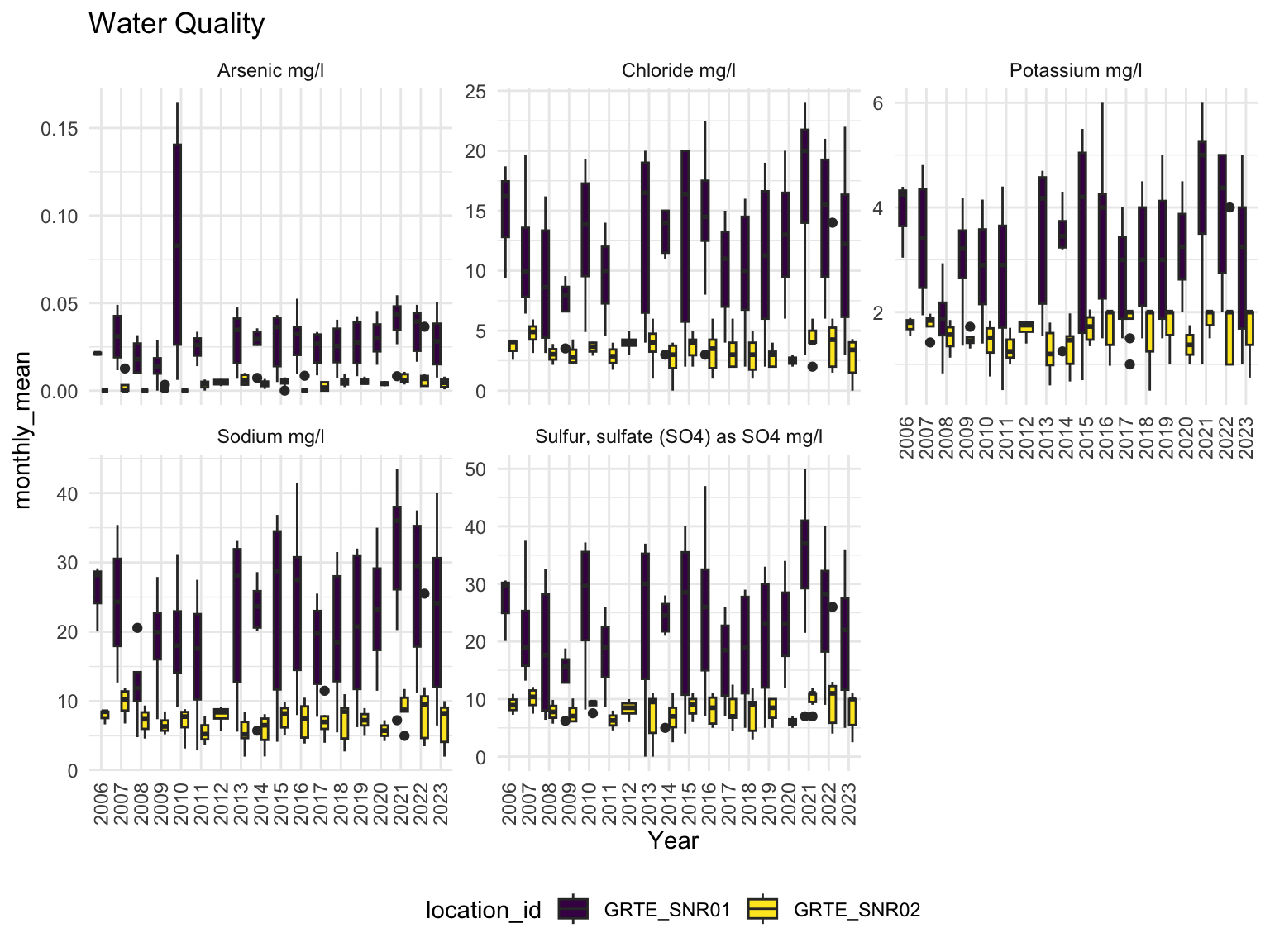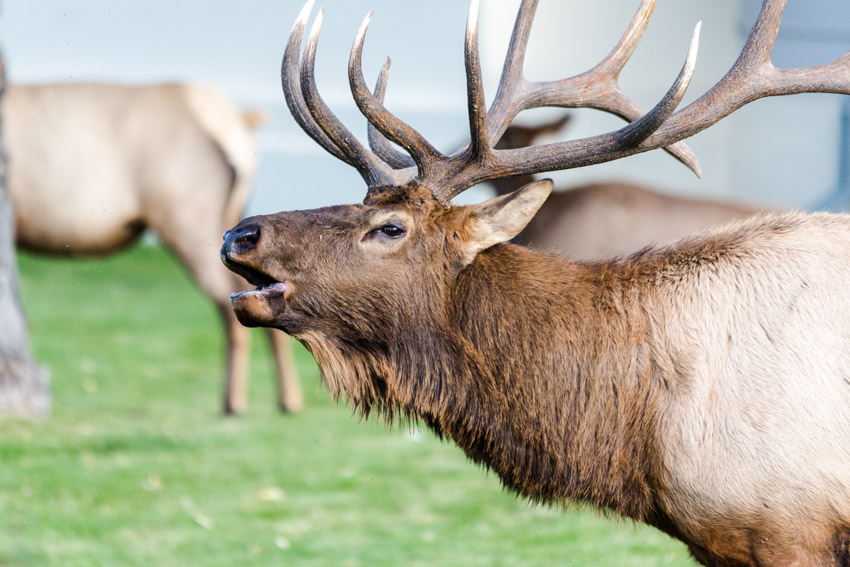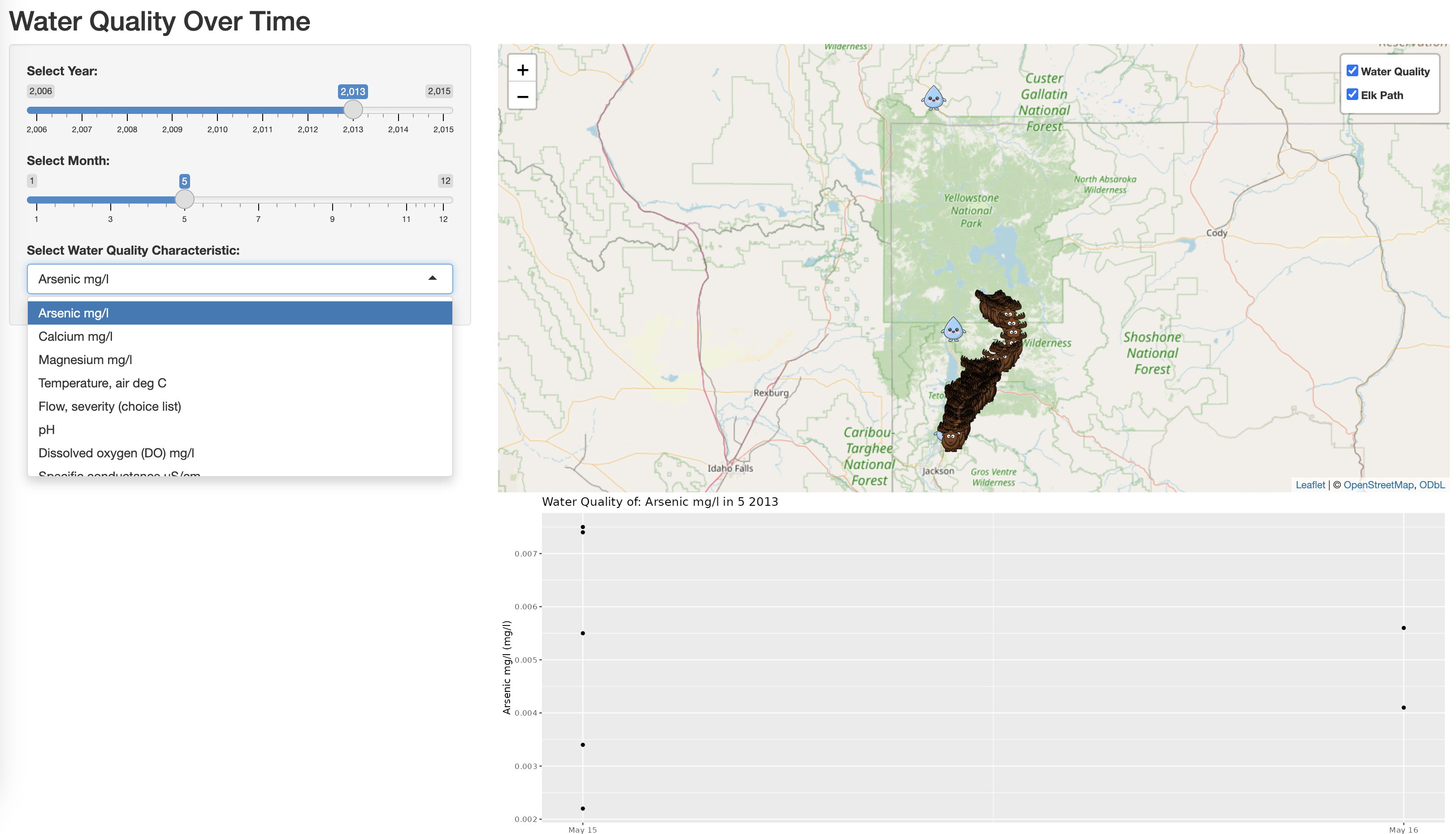The Elk, the Environment, and the Evolving Migration in
Yellowstone
Explored movement of 17 female elk through Yellowstone and the
Grand Tetons National Park from 2006-2015
Considered environmental factors such as weather, land cover, and
water quality using R’s mapping capabilities to create an interactive
visualization platform and assess differences in migration
patterns
Questions Considered
- Where do the elk move around in Yellowstone and the Grand Tetons
National Parks?
- Do the elk that are collared with GPS signal move individually or as
a pack?
- How does elk movement change over time of year and year to
year?
- How do environmental factors such as weather, land cover, soil
chemistry, and soil temperature affect the elk’s migration
patterns?
Primary Analysis
Water quality was collected at two sites that directly correlate to
the path of elk movement, GRTE_SNR01 which refers to the Snake River
water quality monitoring site at Flagg Ranch, Wyoming, and GRTE_SNR02
which refers to the Snake River water quality monitoring site at Moose,
Wyoming.


Results
We discovered that high arsenic concentrations were reported in July
and August of 2010 at the GRTE_SNR01 site. At that time, elk were
traveling along the site, potentially exposing themselves to unhealthy
levels of arsenic in water.
Other notable markers observed of poor water quality included dissolved
oxygen and chloride, which may indicate the presence of lead in water
that has no safe concentrations of exposure.





